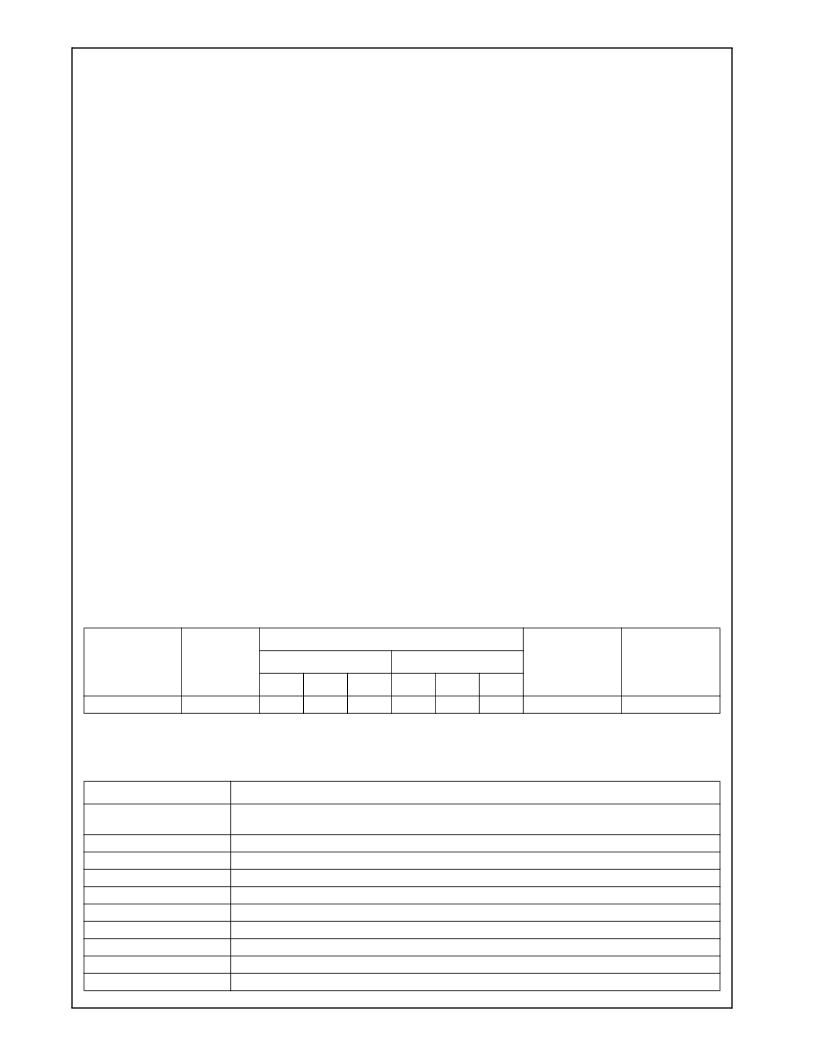- 您現(xiàn)在的位置:買(mǎi)賣(mài)IC網(wǎng) > PDF目錄358620 > 30046-23 (NATIONAL SEMICONDUCTOR CORP) Low Power Integrated x86-Compatible 32-Bit Geode GXLV Processor(低功耗集成兼容X86的32位 Geode GXLV技術(shù)處理器) PDF資料下載
參數(shù)資料
| 型號(hào): | 30046-23 |
| 廠商: | NATIONAL SEMICONDUCTOR CORP |
| 元件分類(lèi): | 微控制器/微處理器 |
| 英文描述: | Low Power Integrated x86-Compatible 32-Bit Geode GXLV Processor(低功耗集成兼容X86的32位 Geode GXLV技術(shù)處理器) |
| 中文描述: | 32-BIT, 200 MHz, MICROPROCESSOR, CPGA320 |
| 封裝: | SPGA-320 |
| 文件頁(yè)數(shù): | 207/247頁(yè) |
| 文件大小: | 4379K |
| 代理商: | 30046-23 |
第1頁(yè)第2頁(yè)第3頁(yè)第4頁(yè)第5頁(yè)第6頁(yè)第7頁(yè)第8頁(yè)第9頁(yè)第10頁(yè)第11頁(yè)第12頁(yè)第13頁(yè)第14頁(yè)第15頁(yè)第16頁(yè)第17頁(yè)第18頁(yè)第19頁(yè)第20頁(yè)第21頁(yè)第22頁(yè)第23頁(yè)第24頁(yè)第25頁(yè)第26頁(yè)第27頁(yè)第28頁(yè)第29頁(yè)第30頁(yè)第31頁(yè)第32頁(yè)第33頁(yè)第34頁(yè)第35頁(yè)第36頁(yè)第37頁(yè)第38頁(yè)第39頁(yè)第40頁(yè)第41頁(yè)第42頁(yè)第43頁(yè)第44頁(yè)第45頁(yè)第46頁(yè)第47頁(yè)第48頁(yè)第49頁(yè)第50頁(yè)第51頁(yè)第52頁(yè)第53頁(yè)第54頁(yè)第55頁(yè)第56頁(yè)第57頁(yè)第58頁(yè)第59頁(yè)第60頁(yè)第61頁(yè)第62頁(yè)第63頁(yè)第64頁(yè)第65頁(yè)第66頁(yè)第67頁(yè)第68頁(yè)第69頁(yè)第70頁(yè)第71頁(yè)第72頁(yè)第73頁(yè)第74頁(yè)第75頁(yè)第76頁(yè)第77頁(yè)第78頁(yè)第79頁(yè)第80頁(yè)第81頁(yè)第82頁(yè)第83頁(yè)第84頁(yè)第85頁(yè)第86頁(yè)第87頁(yè)第88頁(yè)第89頁(yè)第90頁(yè)第91頁(yè)第92頁(yè)第93頁(yè)第94頁(yè)第95頁(yè)第96頁(yè)第97頁(yè)第98頁(yè)第99頁(yè)第100頁(yè)第101頁(yè)第102頁(yè)第103頁(yè)第104頁(yè)第105頁(yè)第106頁(yè)第107頁(yè)第108頁(yè)第109頁(yè)第110頁(yè)第111頁(yè)第112頁(yè)第113頁(yè)第114頁(yè)第115頁(yè)第116頁(yè)第117頁(yè)第118頁(yè)第119頁(yè)第120頁(yè)第121頁(yè)第122頁(yè)第123頁(yè)第124頁(yè)第125頁(yè)第126頁(yè)第127頁(yè)第128頁(yè)第129頁(yè)第130頁(yè)第131頁(yè)第132頁(yè)第133頁(yè)第134頁(yè)第135頁(yè)第136頁(yè)第137頁(yè)第138頁(yè)第139頁(yè)第140頁(yè)第141頁(yè)第142頁(yè)第143頁(yè)第144頁(yè)第145頁(yè)第146頁(yè)第147頁(yè)第148頁(yè)第149頁(yè)第150頁(yè)第151頁(yè)第152頁(yè)第153頁(yè)第154頁(yè)第155頁(yè)第156頁(yè)第157頁(yè)第158頁(yè)第159頁(yè)第160頁(yè)第161頁(yè)第162頁(yè)第163頁(yè)第164頁(yè)第165頁(yè)第166頁(yè)第167頁(yè)第168頁(yè)第169頁(yè)第170頁(yè)第171頁(yè)第172頁(yè)第173頁(yè)第174頁(yè)第175頁(yè)第176頁(yè)第177頁(yè)第178頁(yè)第179頁(yè)第180頁(yè)第181頁(yè)第182頁(yè)第183頁(yè)第184頁(yè)第185頁(yè)第186頁(yè)第187頁(yè)第188頁(yè)第189頁(yè)第190頁(yè)第191頁(yè)第192頁(yè)第193頁(yè)第194頁(yè)第195頁(yè)第196頁(yè)第197頁(yè)第198頁(yè)第199頁(yè)第200頁(yè)第201頁(yè)第202頁(yè)第203頁(yè)第204頁(yè)第205頁(yè)第206頁(yè)當(dāng)前第207頁(yè)第208頁(yè)第209頁(yè)第210頁(yè)第211頁(yè)第212頁(yè)第213頁(yè)第214頁(yè)第215頁(yè)第216頁(yè)第217頁(yè)第218頁(yè)第219頁(yè)第220頁(yè)第221頁(yè)第222頁(yè)第223頁(yè)第224頁(yè)第225頁(yè)第226頁(yè)第227頁(yè)第228頁(yè)第229頁(yè)第230頁(yè)第231頁(yè)第232頁(yè)第233頁(yè)第234頁(yè)第235頁(yè)第236頁(yè)第237頁(yè)第238頁(yè)第239頁(yè)第240頁(yè)第241頁(yè)第242頁(yè)第243頁(yè)第244頁(yè)第245頁(yè)第246頁(yè)第247頁(yè)

Revision 1.2
207
www.national.com
G
7.0
This section summarizes the Geode GXLV processor
instruction set and provides detailed information on the
instruction encodings. The instruction set is divided into
four categories:
Instruction Set
Processor Core Instruction Set - listed in Table 7-27 on
page 217.
FPU Instruction Set - listed in Table 7-29 on page 229.
MMX Instruction Set - listed in Table 7-31 on page 234.
Extended MMX Instruction Set - listed in Table 7-33 on
page 239.
These tables provide information on the instruction encod-
ing, and the instruction clock counts for each instruction.
The clock count values for these tables are based on the
following assumptions
1.
All clock counts refer to the internal processor core
clock frequency. For example, clock doubled GXLV
processor cores will reference a clock frequency that
is twice the bus frequency.
2.
The instruction has been prefetched, decoded and is
ready for execution.
3.
Bus cycles do not require wait states.
4.
There are no local bus HOLD requests delaying
processor access to the bus.
5.
No exceptions are detected during instruction execu-
tion.
6.
If an effective address is calculated, it does not use
two general register components. One register,
scaling and displacement can be used within the
clock count shown. However, if the effective address
calculation uses two general register components,
add one clock to the clock count shown.
7.
All clock counts assume aligned 32-bit memory/IO
operands.
8.
If instructions access a 32-bit operand on odd
addresses, add one clock for read or write and add
two clocks for read and write.
9.
For non-cached memory accesses, add two clocks
(clock doubled GXLV processor cores) or four clocks
(clock tripled GXLV processor cores), assuming zero
wait state memory accesses.
10. Locked cycles are not cacheable. Therefore, using the
LOCK prefix with an instruction adds additional clocks
as specified in item 9 above.
7.1
Depending on the instruction, the GXLV processor core
instructions follow the general instruction format shown in
Table 7-1.
GENERAL INSTRUCTION SET FORMAT
These instructions vary in length and can start at any byte
address. An instruction consists of one or more bytes that
can include prefix bytes, at least one opcode byte, a mod
r/m byte, an s-i-b byte, address displacement, and imme-
diate data. An instruction can be as short as one byte and
as long as 15 bytes. If there are more than 15 bytes in the
instruction, a general protection fault (error code 0) is gen-
erated.
The fields in the general instruction format at the byte
level are summarized in Table 7-2 and detailed in the fol-
lowing subsections.
Table 7-1. General Instruction Set Format
Prefix (optional)
Opcode
Register and Address Mode Specifier
Address
Displacement
Immediate
Data
mod r/m Byte
s-i-b Byte
mod
reg
r/m
ss
index
base
0 or More Bytes
1 or 2 Bytes
7:6
5:3
2:0
7:6
5:3
2:0
0, 8, 16, or 32 Bits
0, 8, 16, or 32 Bits
Table 7-2. Instruction Fields
Field Name
Description
Prefix (optional)
Prefix Field(s): One or more optional fields that are used to specify segment register override, address
and operand size, repeat elements in string instruction, LOCK# assertion.
Opcode Field: Identifies instruction operation.
Address Mode Specifier: Used with r/m field to select addressing mode.
General Register Specifier: Uses reg, sreg3 or sreg2 encoding depending on opcode field.
Address Mode Specifier: Used with mod field to select addressing mode.
Scale factor: Determines scaled-index address mode.
Index: Determines general register to be used as index register.
Base: Determines general register to be used as base register.
Displacement: Determines address displacement.
Immediate Data: Immediate data operand used by instruction.
Opcode
mod
reg
r/m
ss
index
base
Address Displacement
Immediate Data
相關(guān)PDF資料 |
PDF描述 |
|---|---|
| 300471U | Radial, -55dotc, long life wsitching-power |
| 300CNQ | SCHOTTKY RECTIFIER |
| 300CNQ035 | SCHOTTKY RECTIFIER |
| 300CNQ040 | SCHOTTKY RECTIFIER |
| 300CNQ045 | SCHOTTKY RECTIFIER |
相關(guān)代理商/技術(shù)參數(shù) |
參數(shù)描述 |
|---|---|
| 30046-46L | 制造商:LENOX 功能描述:HOLE SAW BI-METAL 73MM |
| 300-466A | 制造商:LG Corporation 功能描述:CABINET ASSYCMT-9325 |
| 300-466B | 制造商:LG Corporation 功能描述:CABINET ASSYCMT-9324 |
| 300-466K | 制造商:LG Corporation 功能描述:CABINET ASSYCMT-9322 |
| 300-466R | 制造商:LG Corporation 功能描述:FRONT CABINET |
發(fā)布緊急采購(gòu),3分鐘左右您將得到回復(fù)。